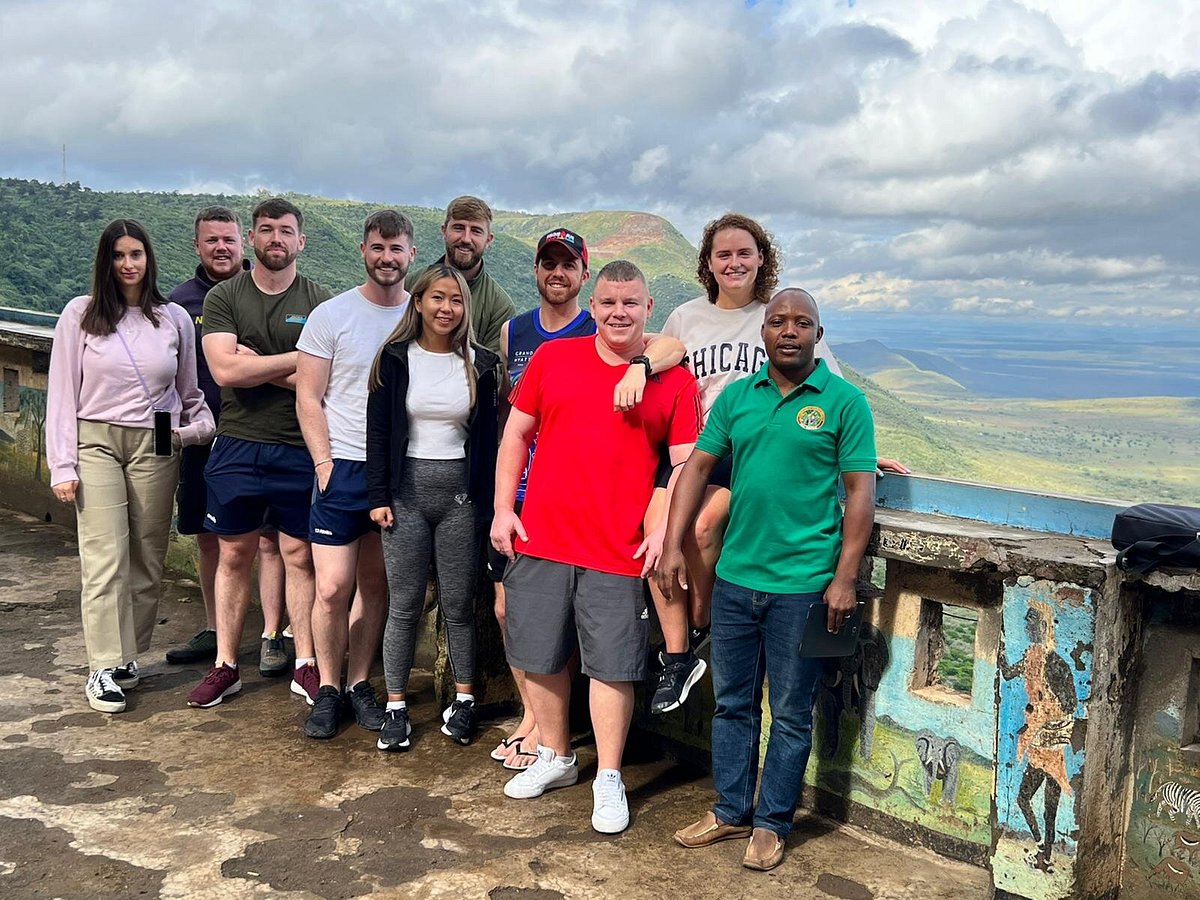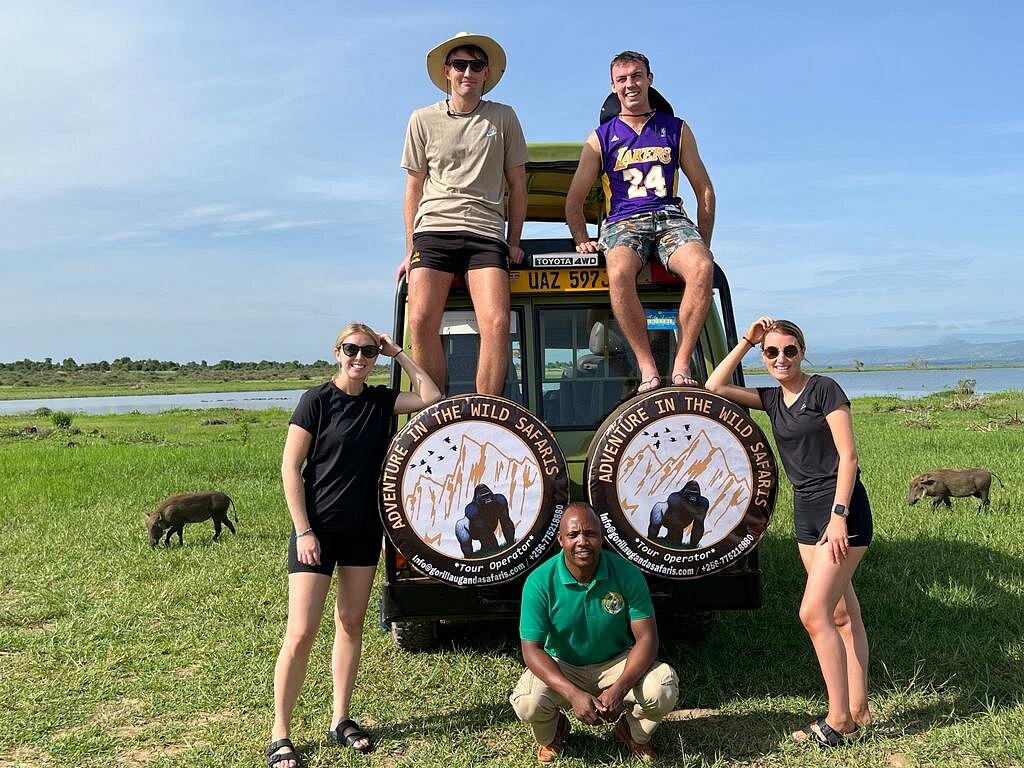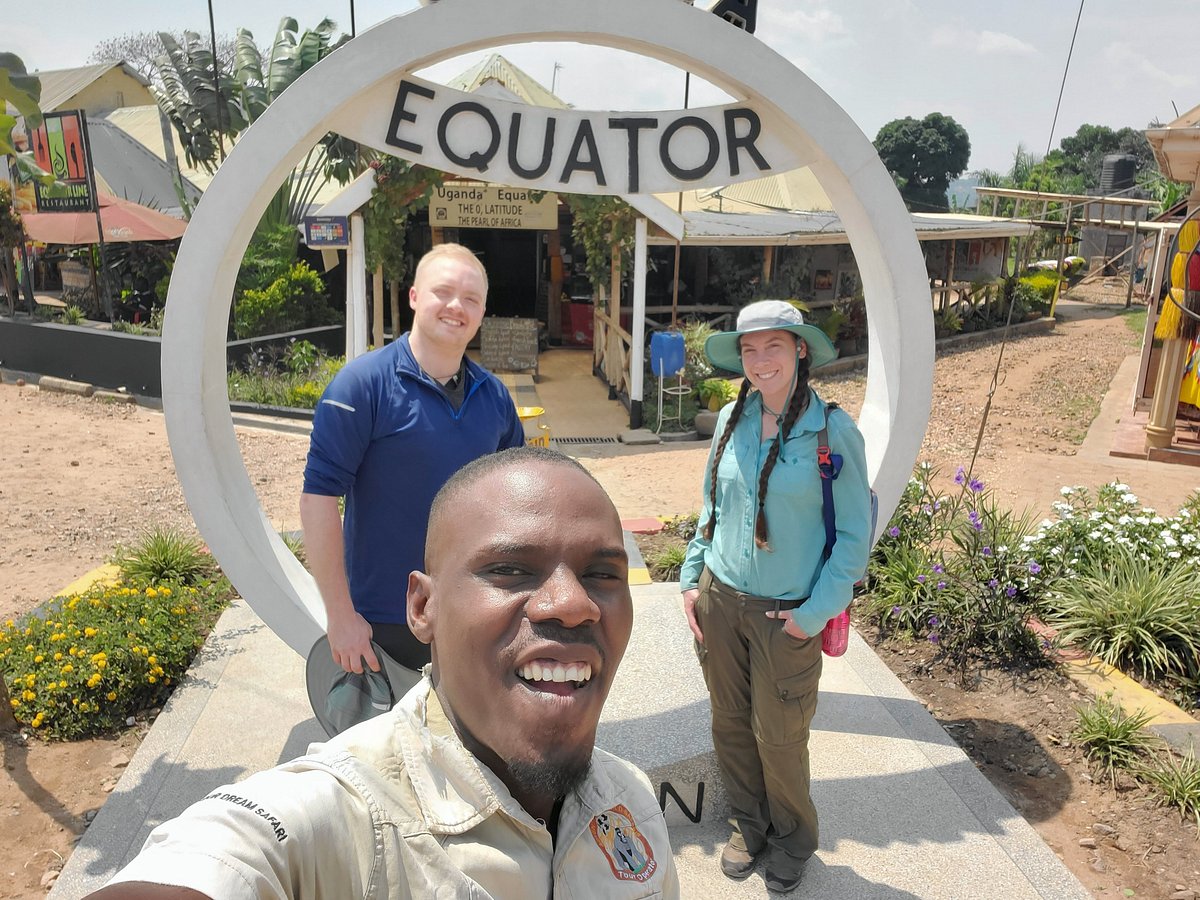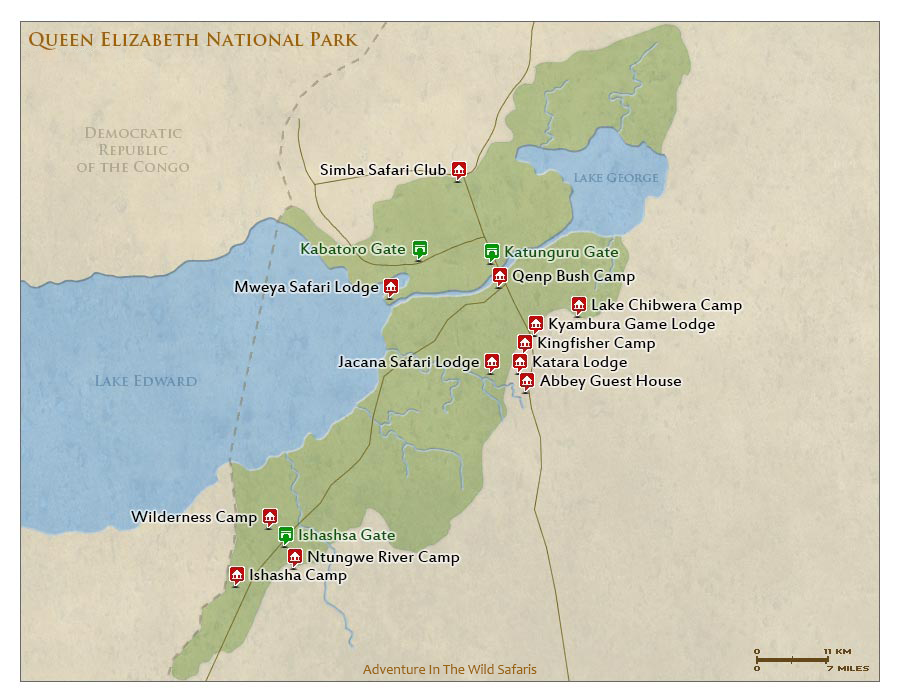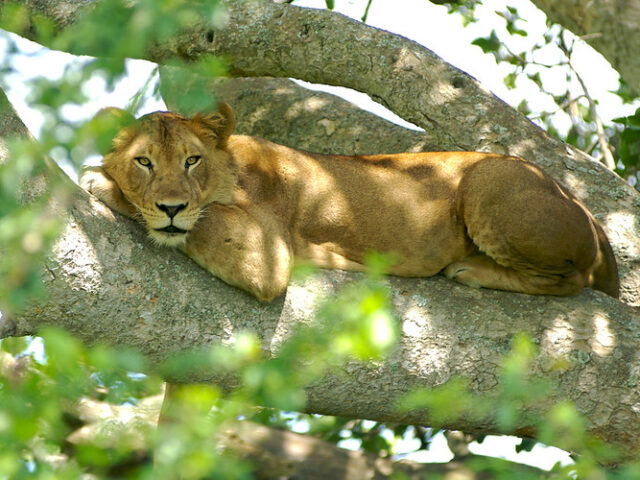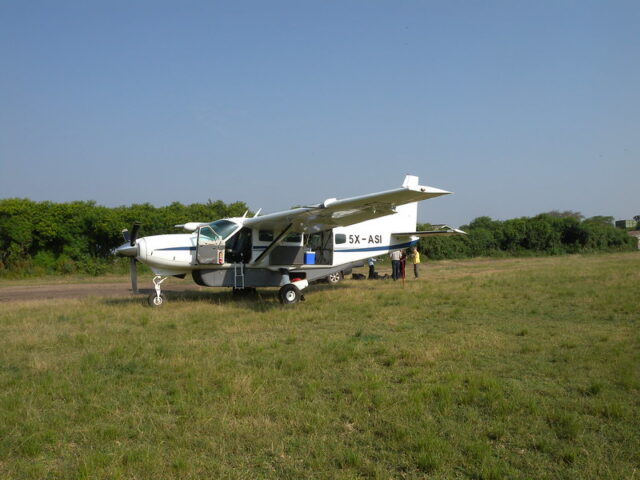Queen Elizabeth National Park
A Medley Of Wonders
Queen Elizabeth National Park’s diverse ecosystems make it the ideal habitat for a classic big five game, ten primate species over 600 species of birds. It’s associated with craters & views of the Kazinga Channel and the endless Ishasha plains. Thorny Acacia dominates this savannah habitat on the Kasenyi plains.
Tree Climbing Lions
Lions In Ishasha Sector
Ishasha is located around 100 kilometers south of Mweya. The far southern section of the park offers a true African wilderness experience. Savannah Woods, the Ishasha River, and Lake Edward are some of the occupants of this area. These areas are home to a variety of species, With tree climbing Lions as the ideal activity
Popular Wildlife Discovery Safaris In Uganda
Guide To Queen Elizabeth National Park
Savannah Game Drive | Ishasha Plains | Kasenyi Plains | Craters
A Medley of Wonders, Queen Elizabeth National Park is undoubted! This which is situated in the Kasese district of Uganda, has a variety of ecosystems including expansive savannah, dark, moist forests, lakes, and fertile wetlands, making it a haven for Uganda tours / Uganda safari / Trip to Uganda. Located behind the massive Rwenzori mountains, Queen Elizabeth National Park offers breathtaking panoramas made up of numerous crater lakes. These lakes have been spectacularly sculpted into the rolling hills of greenery. You can treat yourself to hippopotamuses, elephants, and buffalo when you visit.
The best site to watch lions, especially the Tree Climbing lions, is in Queen Elizabeth National Park, Uganda’s most well-known savanna park, which makes it the ideal location for a Uganda Wildlife Safari. It takes pride in having the greatest range of habitats in the nation, including lakes, savannah grasslands, woodlands, and wetlands, which are home to the most significant number of large mammals.
The park’s breathtaking views include dozens of enormous craters that have been dramatically carved into rolling green hills, panoramic views of the Kazinga Channel, whose banks are lined with hippos, buffalo, and elephants, and the endless Ishasha plains, whose fig trees conceal lions ready to pounce on herds of unwary Uganda kob. All of these sights are set against the ragged Rwenzori Mountains.
Queen Elizabeth National Park is home to magnificent wildlife attractions and an intriguing cultural past. Visitors have numerous chances to interact with the local populations and take in storytelling, dancing, music, and other cultural activities. The ecosystems in the park have been preserved thanks to its gazetting, which also benefits the nearby community.
Thorny Acacia predominates this savannah habitat with a high concentration of candelabra shrub, a cactus that grows along the kazinga river and on the Kasenyi plains. The majority of Queen Elizabeth is made up of open grassland and savannah, which tends to be damp and woody in the west than the eastern half.
At least 95 different kinds of mammals may be found in Queen Elizabeth, which also boasts 20 carnivores, including the spotted hyena, side-striped jackal, lion, and leopard. Queen Elizabeth National Park in Uganda is a true Medley of Wonders!
Attractions In Queen Elizabeth National Park Uganda.
The park is known to be a habitat for about 95 mammal species and over 612 bird species, and it includes a diverse range of flora and fauna. All Uganda safari travelers find this park to be one of a kind and particularly beloved due to the variety of animals there. In reality, the park has five levels of vegetation, not the 57 that geographers claim it possesses. Specifically, vegetation is found around lakes, swamps, or bushy grasslands, in addition to forest grasslands. You can visit Queen Elizabeth and other parks in Uganda throughout the 8-day safari.
The park’s grasslands are home to a variety of animals, including elephants, Cape buffalo, Uganda kobs, waterbucks, warthogs, lions, leopards, and hyenas. In addition to the Maramagambo forest, topis can only be found in Ishasha, while forest primates can be found in the Kyambura Canyon.
Some protected areas exist in Africa. As a result, the park’s impressive bird list is greater than that of Virunga National Park, which is nearby. African skimmers, Chapins flycatchers, Pink-backed pelicans, Papyrus canaries, Shoebill storks, Martial eagles, Black-rumped Buttonquail, and big flamingos are a few of them within the park.
Mweya Peninsula.
Excellent lodging is available in the park on the peninsula, which is the center of sightseeing activities. Taking a tour with a ranger guide is the best way to truly explore this park. This individual assists you in exploring the park and the furthest reaches of the peninsula. All the events that visitors might desire to participate in are coordinated by the Mweya information center. The fact that this peninsula looks out over Katwe Bay on Lake Edward is its most fascinating feature. Additionally, it offers a gift shop with souvenirs from Uganda trips that will always make you think about the park.
Peninsula Mweya: Often frequented during game drives, this area of land that juts into Lake Edwards provides the best game viewing while traveling the numerous game routes. Salt mining operations have been going on inside the alkaline Lake Katwe for some time, as that is the principal industry in the region. As a result, a lot of tourists come here to see and learn about the old-fashioned way of extracting salt. The Katwe Explosion Crater Lakes are the highest-elevation lakes in the park and are located in the northern portion. Visitors can observe the western rift valley, the lakes George and Edward, and the Rwenzori Mountain ranges from here.
Kazinga Channel.
The Kazinga waterway, which connects Lake Edward to Lake Gorge, is around 40 meters long. The main wildlife initiatives in the parks are perfectly visible from there. All year long, a significant number of mammals, birds, and reptiles congregate around the lake’s shoreline. The Nile cruise or even the Lake Edward entry are good places to see the animals. The trip operates between 15 and 17; in addition, voyages depart between 11 and 13 depending on demand from tourists.
Parts of the Kazinga Channel include North Kazinga and Kasenyi. The plains of Channel are well known for being hotspots for game viewing. The only way to observe all the wildlife in its natural habitat, including buffalo, elephants, and other creatures that live in the grassland thickets of the Northern Kazinga close to Mweya, is via tracking.
Lions can be seen in the eastern Kasenyi Plains and along the Kasese Road, where they prey on the large Uganda Kobs that live there. Early in the morning and late in the day are the best times for Uganda safari game drives. The ranger’s job is to make sure you learn enough about the park to have the best African experience possible.
The Equator And The Queen’s Pavilion.
The Equator in Uganda offers a picturesque location for photography as well as gift shops where you may purchase a keepsake. You may see the Queen’s Pavilion in the northern Crater Drive entry. For this location, Queen Elizabeth provided a temporary shelter in 1954. For her visit in 1959, a permanent pavilion was built. The Duke of Edinburgh’s second visit in 2007 resulted in improvements, including better amenities like a coffee shop and internet access.
Ishasha Tree Climbing Lions.
Ishasha is located around 100 kilometers south of Mweya. The far southern section of the park offers a true African wilderness experience. Savannah Woods, the Ishasha River, and Lake Edward are some of the occupants of this area. These areas are home to a variety of species, including climbing lions and the uncommon shoebill stork, among other creatures.
Kasenyi Plains:
Due to the abundance of antelopes, lions, and other huge predators that live there, these plains are frequently visited by tourists on Uganda Wildlife Safaris. The Kalinzu Forest, which lies in the southeast section of the park, is a great place to go for chimpanzee tracking. The Kyambura Gorge is a lush, forested valley that is 100 meters deep and unusual. It is a popular place for chimpanzee tracking excursions in Uganda and is home to numerous primates.
How To Get To Queen Elizabeth National Park.
The park is 389 kilometers from Kampala, the country’s capital, and may be reached either by charter flight or a 6-hour drive via Masaka Road.
Queen Elizabeth Park occupies an area of 1978 km2 in western Uganda, which it shares with the districts of Kasese, Bundibugyo, and Bushenyi. The park is accessible from Bwindi through a dirt route and is about 5–6 hours on a paved road from Kampala via Mbarara.
Along with other attractions, it includes a portion of the Lakes Edward and George, which are connected by the Kazinga waterway. Either through Fort Portal via Kasese (410 km) or Mbarara (420 km), the park is reachable from Kampala on the tarmac. On a surface road via Mbarara, the park is about 5–6 hours from Kampala. The Ishasha sector, located south of the Bwindi Impenetrable National area, is another way to access this Uganda safari area. seven-day safari.
Popular Safaris
- 10 Days Kibale Forest Chimp Trek
- 15 Days Kibale Primates Safari
- 20 Days Unique Primates Of Kibale
- 8 Days Chimps & Red Tail Monkey
- 7 Days Kibale Birding In The Forest
- 25 Days Colobus Monkey Kibale
All About QENP
- History Of The Park
- Things To Do
- Places To See
- Getting There
Other National Parks & Reserves To Visit In Uganda
Travel Stories, Articles & Tips
Lion Research In Queen Elizabeth National Park
Lion Research In Queen Elizabeth National Park Only in Uganda's Queen Elizabeth National Park is lion study conducted, making it a singular experience. It qualifies as research since the data gathered...
Why is it called Queen Elizabeth National Park?
Why is it called queen Elizabeth national park? Originally known as Kazinga Channel, Queen Elizabeth National Park underwent a name change to Queen Elizabeth National Park in 1954 as a result...
Planning a Safari to Queen Elizabeth National Park
Planning a safari to Queen Elizabeth national park. Queen Elizabeth National Park is the second largest and it is also among one of the most visited national parks in Uganda. The...
Kasese Flying Safaris | Domestic Flights From Entebbe To Mweya
Domestic Flights From Entebbe To Mweya | Kasese Flying Safaris Visitors traveling to Queen Elizabeth National Park, Kibale Forest National Park, Semuliki National Park, and Bwindi Impenetrable National Park use the...






